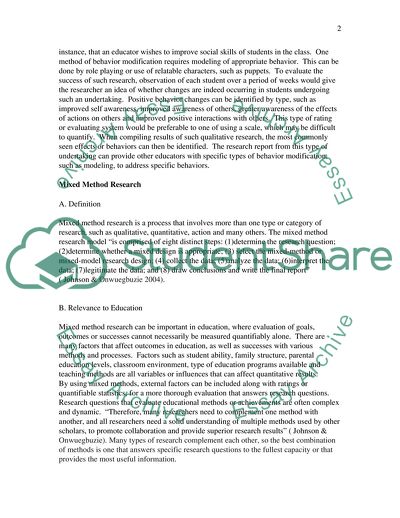Kinds of Research in Special Education Coursework Example | Topics and Well Written Essays - 2000 words. https://studentshare.org/education/1717241-educational-researchresearch-in-special-education
Kinds of Research in Special Education Coursework Example | Topics and Well Written Essays - 2000 Words. https://studentshare.org/education/1717241-educational-researchresearch-in-special-education.


